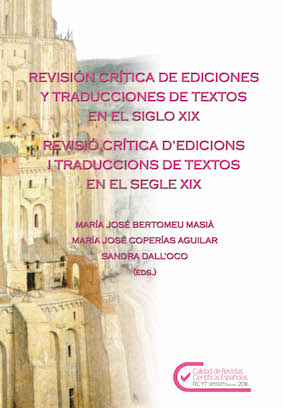Jules Verne Journey into Spanish and Catalan
DOI:
https://doi.org/10.7203/qdfed.22.11260Keywords:
Jules Verne, translation, Spanish, Catalan Abstract
Abstract
This paper examines the characteristics of the translations of the works of Jules Verne into Spanish and Catalan, especially his Voyage au centre de la Terre (1864). We find the first translations of this story into Spanish in 1867 and 1868. It studies the linguistic features of these versions, which adjust to the nineteenth century concept of “translation”. The first translation into Catalan of a novel by the author is found in 1926 and the first version of the Viatge in 1959. The publication of some stories in Catalan inspired in Verne between 1910 and 1920, clearly written by Catalan authors, evidences that readers in Catalonia had read Verne in Spanish. This study investigates the circumstances in which this situation took place.
 Downloads
Downloads
Downloads
Published
How to Cite
-
Abstract874
-
PDF (Español)853
-
PDF344
-
PDF (Català)95
Issue
Section
License
 Este obra está bajo una licencia de Creative Commons Reconocimiento-NoComercial-SinObraDerivada 4.0 Internacional.
Este obra está bajo una licencia de Creative Commons Reconocimiento-NoComercial-SinObraDerivada 4.0 Internacional.
Authors who publish with this journal agree to the following terms:
- Authors retain copyright and grant the journal right of first publication with the work simultaneously licensed under a Creative Commons Attribution License that allows others to share the work with an acknowledgement of the work's authorship and initial publication in this journal.
- Authors are able to enter into separate, additional contractual arrangements for the non-exclusive distribution of the journal's published version of the work (e.g., post it to an institutional repository or publish it in a book), with an acknowledgement of its initial publication in this journal.
- Authors are permitted and encouraged to post their work online (e.g., in institutional repositories or on their website) prior to and during the submission process, as it can lead to productive exchanges, as well as earlier and greater citation of published work (See The Effect of Open Access).



